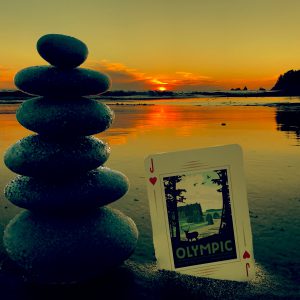
Olympic National Park-Outrider Melissa Schmitz
Olympic National Park
With Outrider-Melissa Schmitz
I departed Montana, crossed Idaho and entered Washington. North Idaho had trekking merit and looked like it might hold a few treasures but I had promises to keep. Melissa was making another trip out to catch some of the features of Olympic National Park. I didn’t know what to expect as I knew very little of the park so she had gathered some intel from friends in the State. I had always dreamed of crossing Washington because of the proximity of diverse ecosystems. I had no idea a full variation was consolidated on Olympic. Sub-alpine forests and meadows, temperate rainforests, rugged coastlines and glacier capped mountains were all on the peninsula. Contrary to my park experiences to date, Olympic was also an easy accommodation. I went into the area blind and with no reservations. It was a risk at peak season but I ended up pleasantly surprised. The traffic was non-existent, the crowds minimal and the landmark features recommended by Melissa’s friends were in reasonable proximity to an excellent deal in a questionable RV lot in Forks, Washington.
Forks was located on the far West side of Olympic, along Washington 101, the main road that circles the perimeter of the peninsula. Seattle lies East, through the park and across Elliott Bay. The 138 miles of roadway required to maneuver around the water and navigate the route takes four to five hours. On the way from the airport, Melissa enlightened me to the fact that Forks found itself on the map because of a teen vampire show where juvenile nyctophiles ran amuck during daylight hours due to the cloud cover frequently found in Forks. When exposed to sunlight, these adolescent vamps glistened as if bedazzled. The only thing I saw that that shimmered near Forks was the green and blue waters of Lake Crescent and the orange and purple glow of the sunset on the Pacific. We had no dreary clouds for much of our time on the peninsula either, just bright sunlight after briefly overcast mornings. The area was in the middle of a record breaking lack of rain which worked marvelously to our benefit. It did not appear the blood sucking entertainment series garnered much success for the town of 3,800. It looked a bit worn and neglected. I am sure weather conditions had a huge impact but there did not appear to have been any new development in decades.
The park did not seem to draw much attention either. It was a huge expanse of land and Forks was on the far side of the park from Seattle but I was surprised that more locals were not evident, even on the weekend. Originally occupied by eight Native-American tribes, the area was made a National Monument by Teddy Roosevelt in 1909. Franklin Roosevelt designated it a National Park in 1938. The design of the roadway circling the park makes the coastal regions easily accessible while obscured mountains climbing out from the tree-covered interior of the cape were inaccessible by road. If one only strayed a few miles off the main road, which is what most visitors do, hardly a fraction of the mountainous interior would even be noticed. You cannot see the forest…or the mountains…for the trees. Centerpiece of the near-million-acre park and obscured by these towering conifers comprised of Sitka Spruce, Hemlock, Douglas Fir and Western redcedar lies Mount Olympus and other difficult to reach peaks.
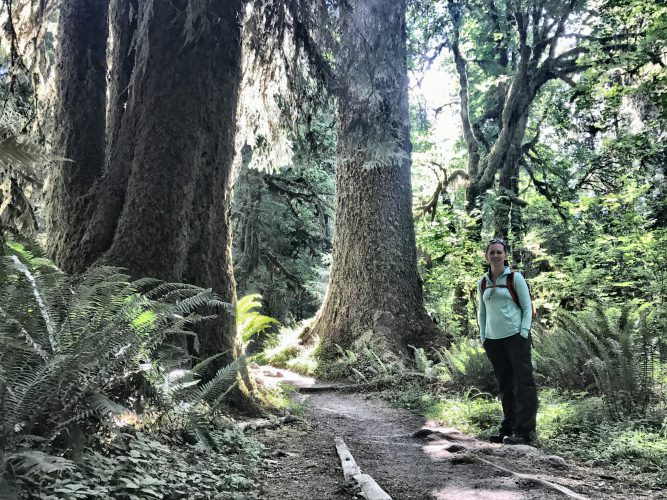
At the trailhead of the Hoh Rainforest route to Mt Olympus
I deviate from chronology in favor of ecology and share that we did do a section of the hike to Mount Olympus late in our stay. It was seventeen miles through the Hoh Rainforest to the base of the mountain. I believe a few additional miles up the mountain to the tune of eight thousand feet in elevation gain over the course of the route. We were not feeling quite that industrious so we tackled about six miles of the trail and appreciated the falls and foliage up to that point.
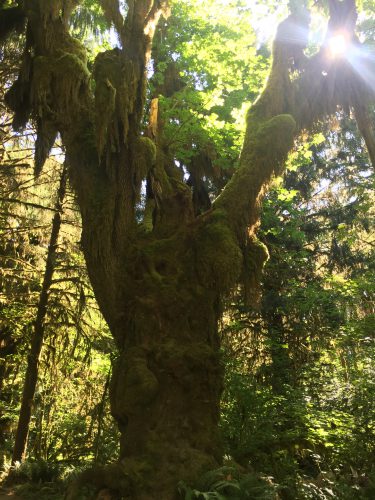
Seasons of change give each ancient tree a unique appearance
Photo Credit-Melissa Schmitz
The rainforests were eye-popping and full of lush growth emerging from every niche. Ferns, wild flowers and fungi sprung from rich, loam soils and deadfall. The trees were tall with huge trunks and clearly of an age exceeding our entry into being. Chandeliers of yellow and green moss dangled from thick branches filtering the bright rays of sun. The whole area was opulent by visual standards. Dozens of species of plants and animals thrive in the region and we saw a herd of Washington Elk lounging on an island in the riverbed of the Hoh on our return.
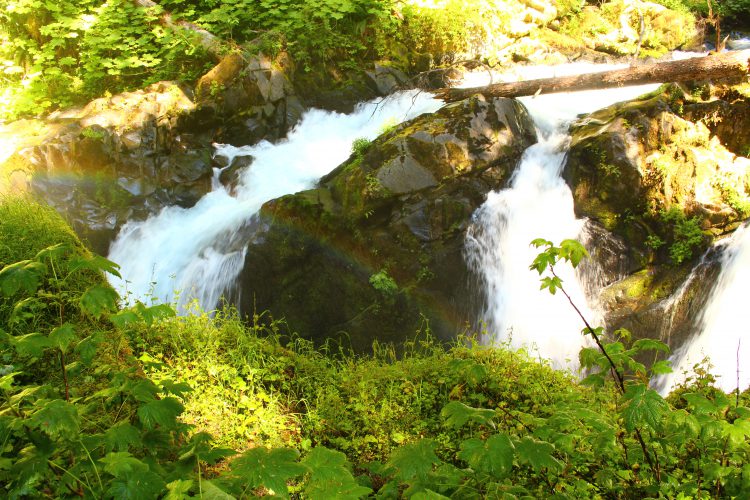
Rainbow on Sol Duk Falls
Photo Credit-Melissa Schmitz
We visited another area of forest, on another afternoon, and trekked along the Sol Duk River to Sol Duk Falls. It was a short movement through ancient groves and vibrant greenery with numerous small falls to enjoy along the route. Sol Duk Falls was a set of turbulent washes descending a narrow canyon slit wrapped in emerald green foliage. The water poured into the slim gully emitting a rainbow in the spray as it rapidly flowed down to the river, out of sight. We grabbed some shots and explored along the edges in hopes of finding more vantage points before turning back. The land was too thick to explore off-trail very much, however. The growth was so dense that you could not step anywhere without harming some form of vegetation and I was discouraged from deviating from the path. Both rainforest hikes had mild elevation gains and I fear the many mountains of Olympic were neglected. Mountains worthy of a return visit. Olympus and other peaks in the region are simply difficult to reach and require rather long hikes with steep elevations. Some areas take a few days of hiking to reach before even considering any peak-bagging. It would be best as an immersive trip of a week to ten days in the backcountry and large elevation gains and losses should be anticipated. Without the time to undertake such an endeavor, we satisfied ourselves with the looming greenery of the rain forests along the Hoh and Sol Duk.
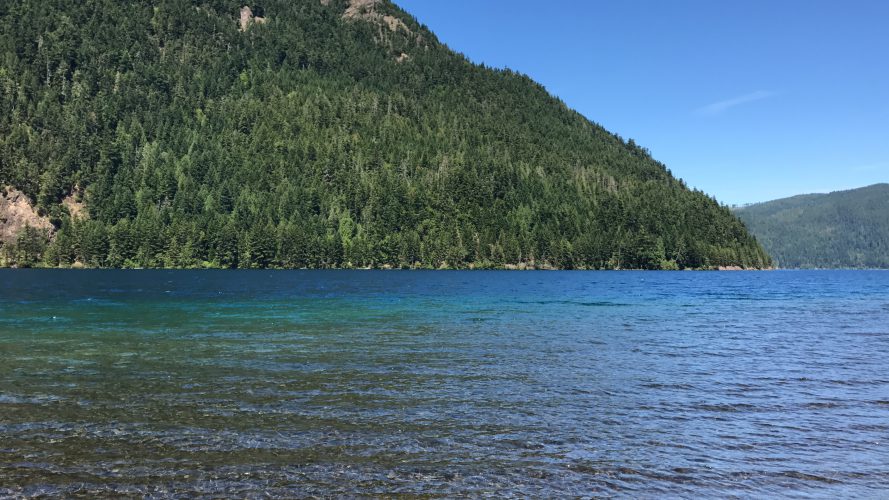
The many colors of Lake Crescent
One afternoon, we broke from our wilderness endeavors and enjoyed cocktails and brunch at Lake Crescent Lodge and took in the view of the waters in lieu of a cold-weather kayak in the brisk winds. After twenty-four miles of hiking, we felt we deserved some lux over labor. The lake was just as gorgeous from the screened porch of the lodge as from any chilly watercraft. Due to the depth and glacial contents of the water, distinct hues of aqua, turquoise and emerald green could be observed in the waters and we enjoyed another sunny and temperate afternoon over Ceasers and chowder. The screens surrounding the porch were not necessary. Contrary to what one might think, there were few bugs in the region. We did not encounter any flies, mosquitos or gnats for the entire trip except one location along the Hoh river where we sought to eat lunch. We happily settled for an almost total win and were otherwise pleased with the absence of pests at peak season in a rainforest, at a lake and and at the beach!
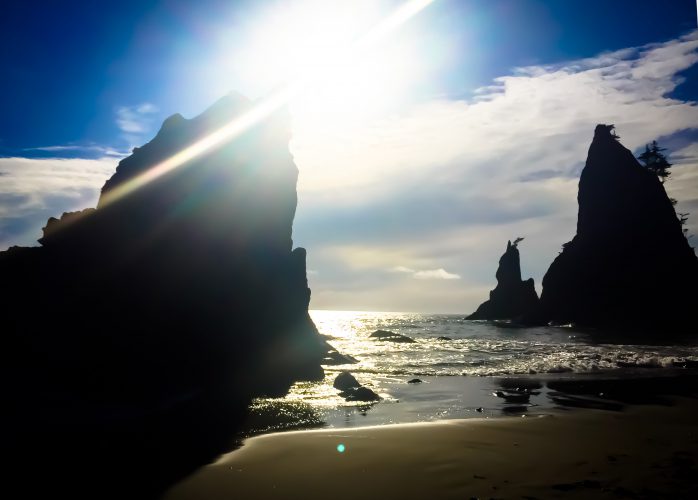
Split Rock
Photo Credit-Melissa Schmitz
Rialto Beach held all the magic for me on this excursion. The unique, four-mile section of coastline we explored exceeded every expectation and afforded some curious encounters with nature. It was a rather interesting place that was strikingly beautiful. We explored Rialto at sunset on the night of arrival and enjoyed ourselves so much that we came back nearly every night thereafter chasing the tides, the sunset and interacting with the abundant wildlife frequenting the sand, shore and sea.
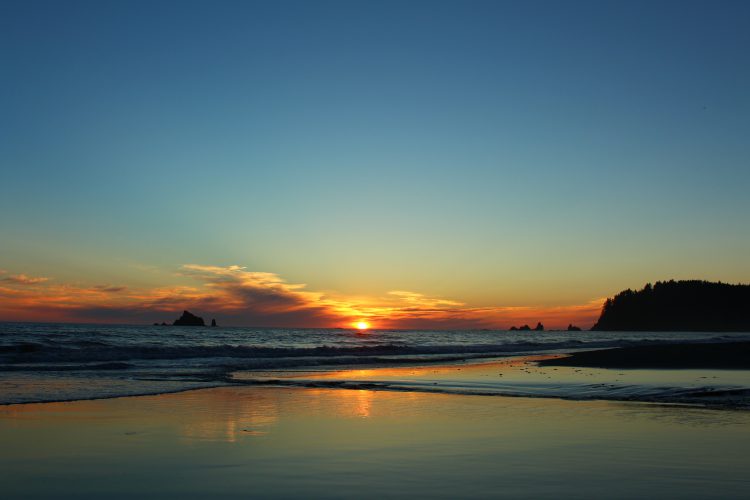
Sunset at Rialto
Photo Credit-Melissa Schmitz
The features of the beach were not common to me. Gulf beaches are typically comprised of gentle dunes, white sand, grasses and scrub. Views are open and expansive. Generally, flat. The deep shorelines around Olympic were elevated with thick forested regions descending to the sands edge a few hundred feet from the breaking waves at high tide. Some coast was simply cliff line with no beach below. The forested ground above simply gave way to the torrents of waves below. Large lots of water-worn deadfall were strewn about the area where the forest floor and sand beaches merged.

In the deadfall getting a photo of the Anderson Design Group card for Olympic National Park. Based on the grin, Ruck was pleased with his shot.
Photo Credit-Melissa Schmitz
The beach surfaces were incredibly diverse
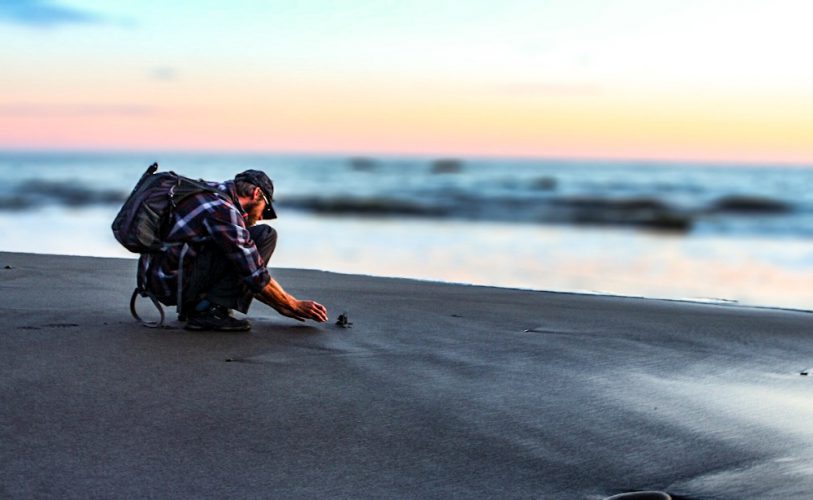
Grabbing another perspective in the smooth black sand
Photo Credit-Melissa Schmitz
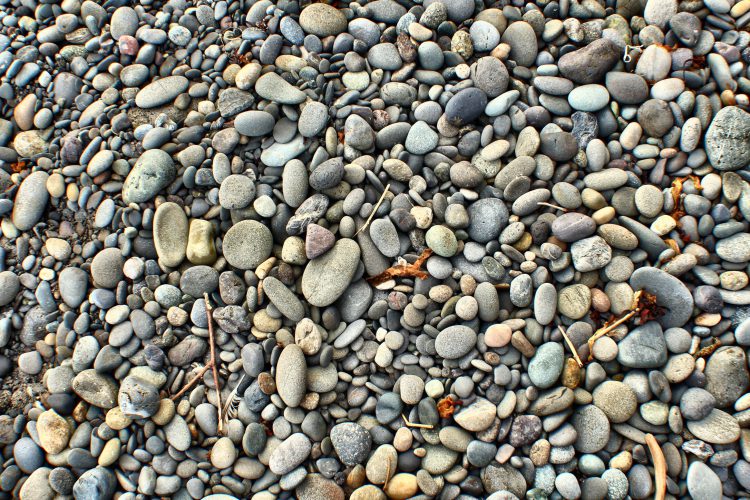
Areas of the beach were completely covered Small rounded stones and large boulders.
Photo Credit-Melissa Schmitz
One section was solid stone but appeared to have been grated away creating a massive washboard surface. The patterns left behind by the erosion were fascinating and I was curious as to how they formed. This area was underwater during high tide so the waves certainly played a role but the make-up of the rock seemed to have an effect as well. As if every other striated layer, was a weaker rock and eroded more quickly. Color lines followed the areas of increased erosion.

Stone strata formed by erosion in an exposed cove beyond Hole-in-the-Wall at low tide
In the Pacific itself, mountainous promontories shot from the surface of the sea. These island could be seen all the way into the horizon line. Split Rock is the largest seen on our route and close enough to explore during low tide. Our route terminated at a cliff face running up the shore inland. The strip of cliff ran a few hundred feet into the ocean blocking any further movement. On the water’s edge, near the tip of the protuberance, we could see Hole-in the-Wall, a natural submersed arch connecting Rialto to areas North past the cliff-face.
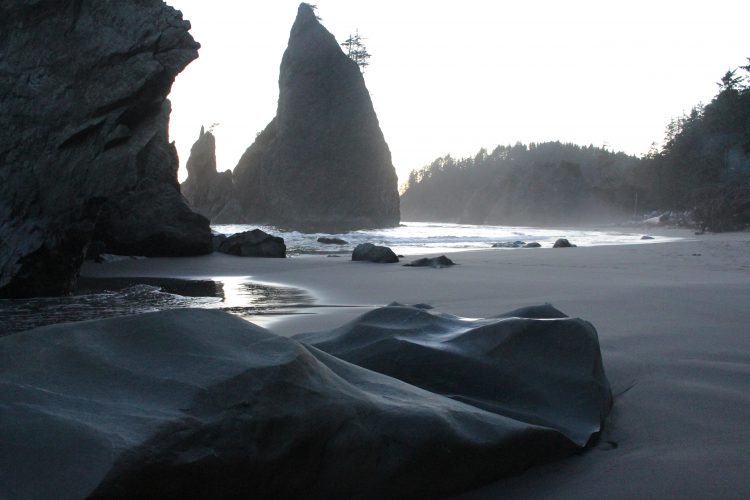
Split Rock at low tide
Photo Credit-Melissa Schmitz
We realized that the water level would only need to drop about a few feet to expose enough rock to potentially reach the Hole. We could potentially get to the cove on the other side with dry feet to claim the tidal pools that were freshly formed from the receding tide. We hatched a plan to make it happen and took in one incredible sunset as we made our way back down shore towards the trailhead. Along the way, Melissa saw a large bird with a massive wingspan set atop a tall tree, bare of any foliage, at the forests edge. It was a bald eagle and she…Melissa was certain it was a female, gazed out over the ocean in the glow of the sunset. I lay down on a piece of massive driftwood directly under the tree and snapped some photos of the majestic predator. I was hoping she would set aloft to enable a picture of the wings but she seemed contented on the roost overlooking paradise. I wondered what was in its mind at that moment…looking out sternly and with apparent deliberation…what lie in its awareness? Thoroughly satisfied, we returned to the rig the first night and did some more research on Rialto. We certainly were not the first to devise a bid to thread the Hole and there were ample warnings about getting caught on the wrong side with the incoming tides. Some coves that appear open at low tide, fully fill with powerful crashing waves in a short time. It’s never desireable to kiss a rock while propelled by forcefull breaking waves so the tidal schedule was crucial intel. During low tide, the floor of the arch is revealed and can be navigated. Beyond the Hole lies a cove that is exposed during this time. The three-and-a-half-mile round trip along the beach to Hole-in-the-Wall quickly became routine on top of our day-hikes amid the rainforests. It was hardly noticed as we moved with purpose adhering to the flow of the tides to access the Hole, tidal pools and otherwise inaccessible coves beyond.
The following eve, and in conjunction with a low tide schedule of 2130, we began our walk down the beach just beyond the late dusk. We hoped to arrive at the Hole right at the 9:30 ebbing onset to maximize time on the other side. I was completely beside myself when I looked up as we passed the tree that served as perch for the bald eagle the day prior and low and behold she was still there. Whether she had moved or not, I cannot be certain but clearly this was one of her nooks in the world and that branch was hers. We continued to walk and passed several campfires and groups of adventurers scattered beyond the deadfall along the shore. Camping and fires, with permits, were allowed on the exotic beach making it one of my top favorites for that reason alone. I call it wave therapy. Sleeping near the break of waves through the night. There is nothing else quite like it and you could do it from the comfort of your tent or overlooking a glowing bed of coals on a brisk evening at Rialto. We arrived at the Wall and could easily see we were early. The waves still violently slammed against the rocks we needed to traverse. We settled in to wait for an opening and watched as dusk began to give way to dark. As we observed the scene, three strange creatures shot through a group of campers, down the shoreline and into the water, disappearing below the surface. Several campers flicked on flashlights and I illuminated my torch but all we could make out were odd silhouettes and shadows hobbling into the water. You could tell there were three of these creatures in a tight formation but neither of us could ascertain what they might have been. Otters were the only indigenous animal we could fathom going from land to sea without a trace. It remains a mystery to us and was not the only mystery of the evening. The waters had dropped enough, after forty-five minutes, to climb a few precarious edges to the Hole. Had we waited ten more minutes we could have walked straight through but our excitement urged haste. We wanted to be first. There wasn’t another soul in sight that seemed interested in joining us at 10 pm but I was filled with anticipation. The interior of the Hole and the surface of the exposed ocean floor beyond was pretty cool. Tidal pools had formed everywhere in holes and pocket wells worn into the stones.
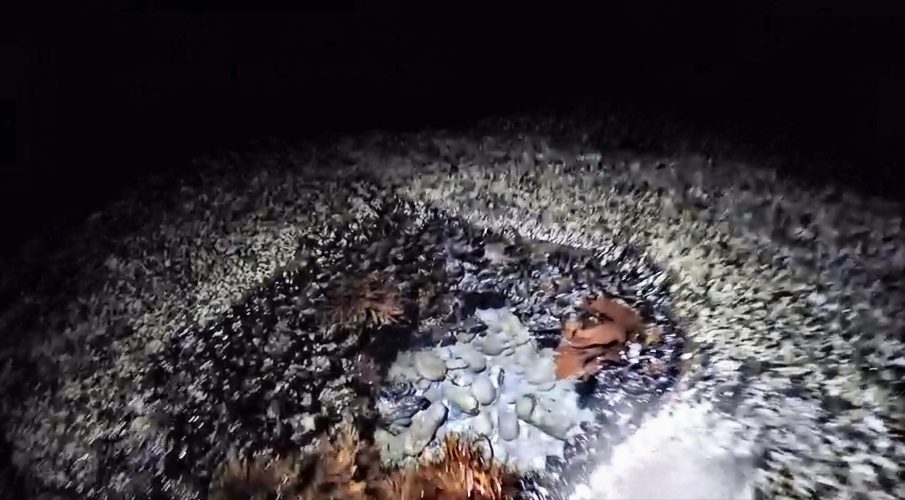
Tidal Pool
These tidal pools filled perforations and holes in the stone surfaces. Each pocket and pool was filled with the life left behind by the receding tide forming little ecosystems in naturally formed aquariums. We slipped along wet seaweed and crunched clamshells as we hopped rocks, maneuvering from pool to pool searching for starfish, squid and other aquatic beings. As we searched, the beams of our lights reflected off the wall casting shimmering reflections from the rock. I was admiring this effect when a sudden change in size and color caught my attention. Two huge yellow eyes attached to something unidentified was coming through the arch. The eyes were large and set on the front of the head of whatever creature this was. As soon as my light focused on it, it jumped off the rock out and bounded out of sight. Melissa and I could make out the eyes clearly and estimate the size at around 20-40 pounds perhaps but have no idea what this skittish animal was either. We only located a few starfish at Rialto. We visited other beaches while at Olympic including First Beach. This is where the starfish and anemones liked to hang out. There were so many clinging to the exposed tidal rocks that they quickly lost their luster. Hundreds could be found in a pretty small area but very few were evident at Rialto. Returning late into the night, we killed our lights and walked in darkness along the shoreline for the near two-mile hike to the trailhead. The sky was illuminated with more stars then I have seen in quite some time. You could make out the Milky Way which has been absent from my view for years. One felt incredibly small and as we gazed up in admiration, it literally felt as if we were not moving at all as walked the black sand…simply standing still, while in motion, under the multitude of tiny lights in sky. It was one of the most beautiful night skies I have observed in years. On our final trip out to Rialto, we were paid another visit by the bald eagle. This time, she met us at the Wall just before we maneuvered through for our final exploration. We would also be perched in another location in a short time. Melissa was bound back to Nashville and I was heading out and heading towards North Cascades National Park. I hope to return to this beautiful place someday but until then…
Ruck out…

Carla Cox
You have a wonderful gift for writing!!